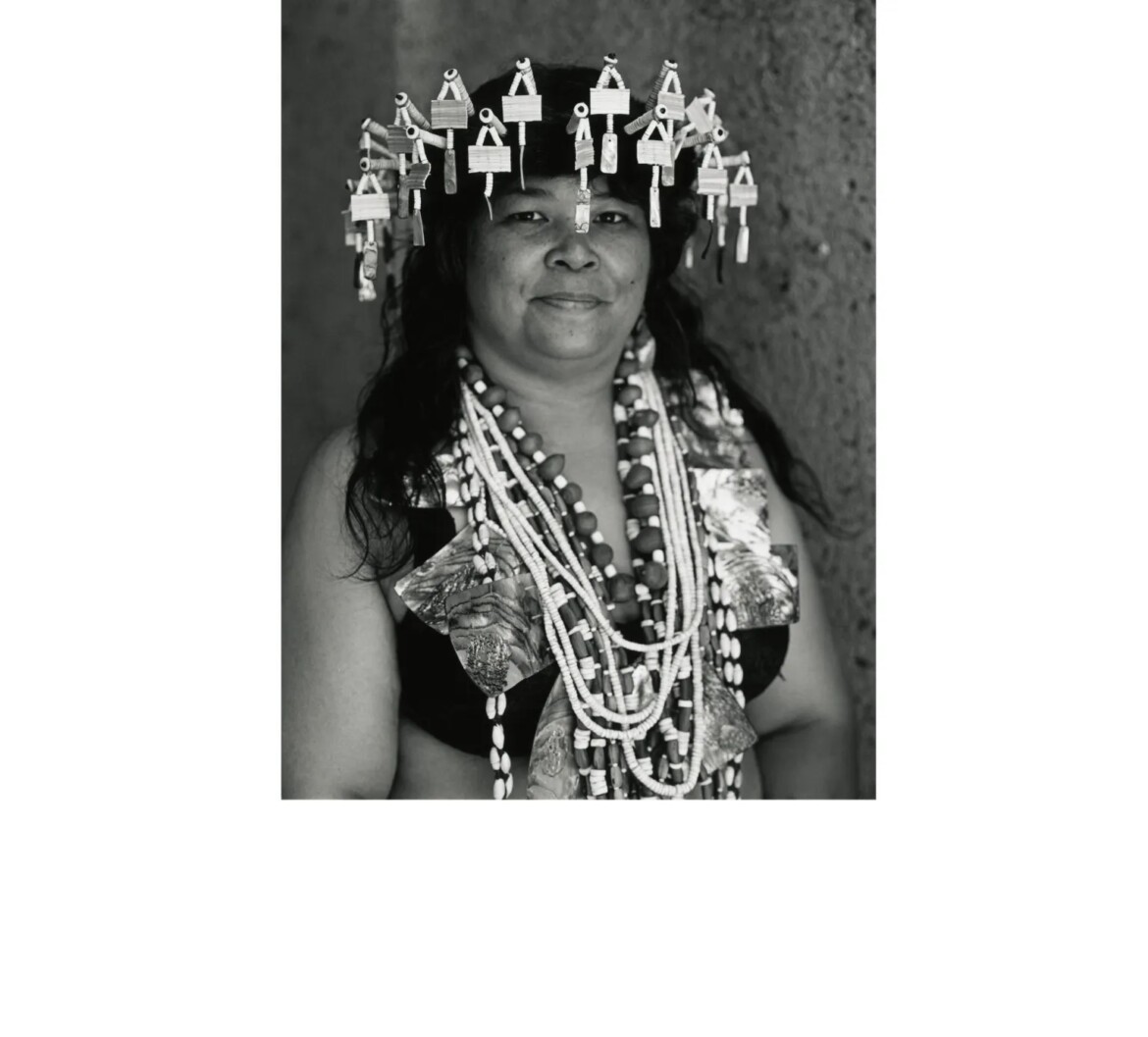It takes a dynamic Native American art exhibit at the Oakland Museum of California to remind one of the importance of land acknowledgements. Sometimes derided as progressive virtue-signaling, the practice provides a small but crucial service in recognizing that the United States is a colonized land and that its indigenous inhabitants must fight for even the slightest visibility.
That sort of visibility was central to the work of Dugan Aguilar. Throughout a nearly 50-year-career, the Ansel Adams-trained Native American photographer made it his life’s work to document the lives of his fellow natives in the tribes that still abundantly populate the land now known as California.
So prolific was the late photographer’s work that, as OMCA curator Drew Johnson said, the big question in assembling “Born of the Bear Dance: Dugan Aguilar’s Photographs of Native California,” which runs through June 22, was what to choose from an embarrassment of riches. Given that Aguilar would often gift original prints to the subjects of the photos—mirroring a Native American practice of exchange —one can only speculate as to what didn’t make it into the show, which is already packed to the gills.

The collection at OMCA—complemented by programming including an appearance on June 30 by Lyla June, an Indigenous musician, scholar and activist of Navajo, Cheyenne and European lineage—is eye-popping and rich in its diversity.
Most of the photos are monochrome, which makes the occasional color contribution truly stand out. It’s also diverse in its portrayal of California Native tribe life, showing everything from bear dance rituals to roadside market stands to even bold landscapes (such as “Valley Oak”), which reveal Adams’ influence most clearly.

Different areas are divided into different themes, each bearing a name and a quote from the late photographer. A blue room bears the title “Celebrating Tradition” and is dedicated mostly to near-hypnotic portraits—such as “Jennifer Bates (Northern Sierra Mewuk), Oakland Big Time”—of tribal members in traditional dress, staring into the lens. As the accompanying Aguilar quote states: “As a Native American, I really respond to Native American faces. I see beauty in people.”
Photos taken inside and outside a handmade hut (“Untitled [Chaw’se]”) lend a mythical quality to these traditional structures without fetishizing them the way Western film and television do. The photos of the hut present it as a gathering place for dear friends and family, not for tourists who want to eat-pray-love their way apart from city life.


As Aguilar was a U.S. military veteran, it’s no surprise the show has a section called “Honoring Hudessi: Native War Veterans.” “Hudessi” is a Maidu tribe term meaning “brave man” or “special champion.” The collection in this area features photos of Native veterans, in uniform and post-discharge in civilian life, alongside a “Marine Corps Emblem with Feathers and Service Medals.” The undated latter piece is as described, evoking such a powerful image that seeing it alone merits a visit to the exhibit.

The exhibition also includes items that aren’t photographs, including physical archives of Aguilar’s work on every conceivable tech format of the last five decades: film, CDs, zip discs, memory cards and more. There’s also a section dedicated to basket-weaving, with baskets (mostly donated to Augilar and his family) and photos including one of Elsie Allen of the Pomo Nation in which the eponymous subject is lit in such a way that clearly indicates she is illuminated with pride of her craft.
That pride is infectious. Aguilar’s adult son, Dustin, who appears in a number of photos and served on the exhibit’s advisory committee, was on hand at the exhibition’s opening to represent his father, who died in 2018. Taken aback by the Native pride exudes from his father’s photos on the wall, Dustin said the exhibition “makes the camera a tool of celebration.”
“Born of the Bear Dance: Dugan Aguilar’s Photographs of Native California” runs through June 22 at the Oakland Museum of California, 1000 Oak St., Oakland. Tickets are $18–$25, free for ages 12 and under at museumca.org. Thursday After Hours from 5 to 8 p.m. Jan 30 features gallery talks and a performance by Lyla June.
Charles Lewis III is a San Francisco-born journalist and performing artist. He has written for the San Francisco Chronicle, KQED, the San Francisco Examiner, and many more. Dodgy evidence of this can be found at The Thinking Man’s Idiot.wordpress.com.
The post Review: Aguilar’s rich images of Native Californians comprise ‘Born of the Bear Dance’ appeared first on Local News Matters.
